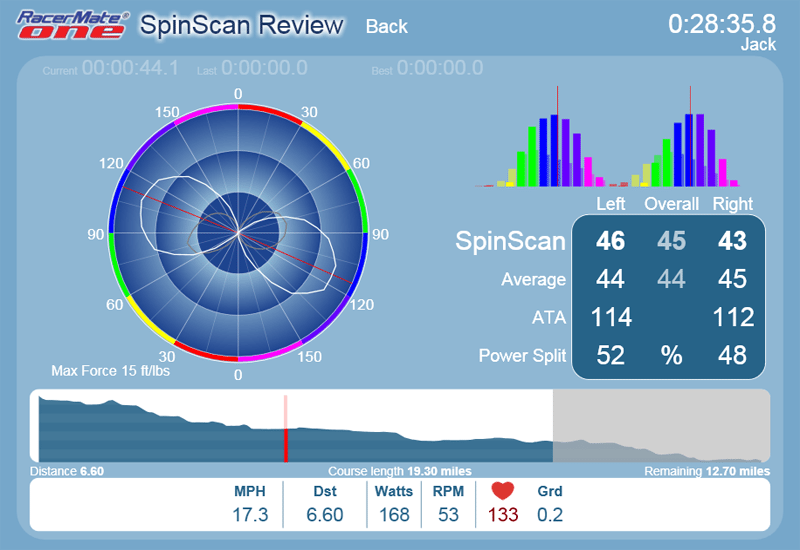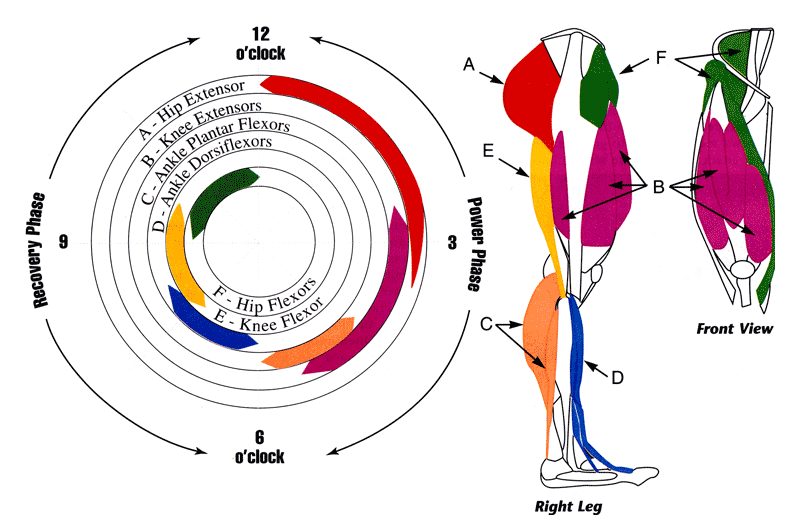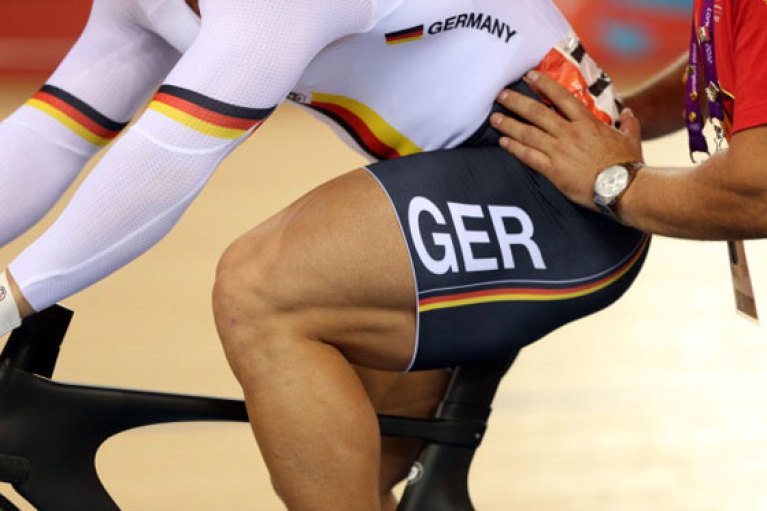The Cycling Myth That Won't Die: Pedaling Circles

Here’s a cycling myth that just won’t die; if you want to be a great cyclist you need to perfect your spinning technique and pedal perfect circles. It seems every year we get bombarded with articles explaining the benefits of pedaling in circles. They all say the essentially the same thing, if you want top performance on the bike you need to stop mashing the pedals and start working on all parts of the pedal stroke. Usually, these articles include a call to try out some goofy one legged-pedaling drills or worse a pitch for some silly piece of equipment.
So, surely professional cyclists must pedal in perfectly round circles, right? Nope. Not at all. The reality is that the best cyclists out there absolutely mash on the pedals. Pedaling circles is a myth, and one that can do real harm to you.
“It appears that ‘elite-national class’ cyclists have the ability to generate higher ‘down-stroke power.’ Compared with group 2 (amateur group), group 1(elite group) also produced higher peak torques and vertical forces during the down-stroke even when cycling at the same absolute work rate as group 2.”
Physiological and bio-mechanical factors associated with elite endurance cycling performance. Coyle EF et. al. 1991

With so many products providing fancy graphs of the pedal stroke and goofy products like PowerCranks to help you get it, it’s hard to believe the whole thing is a sham. After-all, when have marketers ever lied?
The first step to understanding why pedaling circles is a myth is to discuss bio-mechanics and physiology. The force generation for cycling is pretty simple, essentially we are looking at hip and knee extension and flexion. Extension is pushing down on the pedal and flexion is the process of returning the pedal to the top of the pedal stroke.
Extension in the hip and knee is primarily driven by the gluteus maximus, hamstrings and quadriceps. Flexion primarily involves the hip flexors (iliopsoas & psoas) and rectus femoris. It should be pretty obvious at this point that there’s a pretty big size difference between the extension and flexion muscle groups. The extension muscles are physically much larger.
This makes perfect sense from a physiological standpoint. Extension muscles push against gravity all the time, flexion muscles are only used to lift up the leg. The amount of force required to lift your entire body and keep it there will always be more than the force required to lift your leg. Why then would you expect the flexion muscles to provide the same force on the upstroke as the extension muscles do on the down stroke?
Unless your extensors are extremely weak and your flexors are over-trained it will never happen. It is impossible for the muscles responsible for flexion to produce equal force as the extensors. And that is exactly what would be required for an upstroke to add meaningful power to the pedal stroke as both legs are mechanically connected by way of the crank arms and bottom bracket.
As one leg pushes down, it also lifts the opposing leg. The best you can do is lift the weight of the opposing leg on your upstroke. But, even that doesn’t confer an advantage. There’s no metabolic difference between lifting the opposing leg and letting the down-stroke lift the opposing leg. Either way, you’re moving the same mass the same distance.
While the metabolic cost might be equal, pulling up on the pedal stroke can actually do harm to a cyclist. The primary hip flexors originate on the transverse process of the lower vertebrae. Meaning that when you pull your leg up, you also pull on your lower back. This can fatigue your lower back and lead to back pain and physiological changes like lordosis.
As for the real meat and potatoes; does pedaling circles make you faster, studies paint a pretty clear picture. Pedaling circles impairs performance and decreases efficiency.
- ‘pedalling in circles’ allows pedaling to become mechanically more effective, this technique does not result in short-term improvements in gross efficiency. (Gross efficiency and cycling performance: a brief review. 2012)
- When the participants were instructed to pull on the pedal during the upstroke, mechanical effectiveness was greater (index of force effectiveness=62.4+/-9.8%) and gross efficiency was lower (gross efficiency=19.0+/-0.7%). (Effect of pedaling technique on mechanical effectiveness and efficiency in cyclists. 2007)
Pulling up on your pedal stroke and trying to achieve a perfect pedal stroke will not increase your performance on the bike. In fact, working on pulling up is more likely to cause a decrease in performance and possibly even injury. If you want to increase your cycling performance, your best bet is to ride more, ride harder and work on building up those quads by mashing the pedals.







